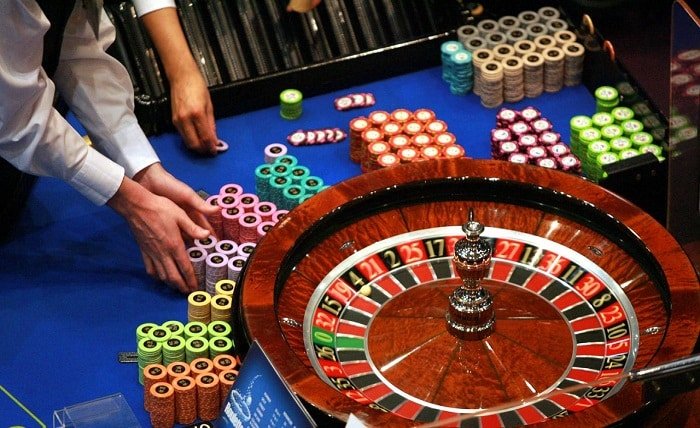How Many Spins Should You Give A Wager Before Trying Another One?

Introduction
Many players find it difficult to select how long to continue with a given game before switching on something else given the increasing range of online games now accessible. Personal strategy, entertainment taste, and even understanding of how these games work all influence the choice of how many spins to commit before switching. Let’s discuss some important factors that could direct players in deciding when to attempt something different or when it’s appropriate to give a game another spin.
Appreciating The Dynamics Of The Game
Chance games like the ones we are talking about rely on sophisticated algorithms to decide results. Every spin is produced separately, hence the outcome of one prior spin has no influence on the next. At the core of the experience, this idea of randomness makes every spin an individual event.
Many players wrongly believe in “hot” and “cold” streaks, thinking that if the game paid out recently, it will keep doing so, or conversely, if it hasn’t paid out, a victory is due shortly. Though there are techniques players may use to feel more in charge of their gaming time, such as limiting the number of spins before they review their approach, the chances stay the same on every spin.
The Meaning Of Spin Count
A few elements determine the amount of spins a player should commit to before determining whether to keep on with the same game or change to another:
Players with a specific budget can use the spin count as a financial reference. For instance, pledging to spin a set amount, say, 50 or 100 helps to guarantee that one does not overspend and yet enjoys the game. Establishing a budget-based spin count also helps players better handle their money, therefore enhancing the sustainability and enjoyment of the activity.
Entertainment Value: Aiming for a pleasurable experience regardless of the result, some gamers give entertainment top importance over winning. In this instance, merely because they enjoy the theme, graphics, or features, gamers could decide to give a game more spins. This can help one decide when to change; if the fun wanes, it could be time to investigate something else.
The Ten, Fifty, And Hundred Spin Approaches
Players have different preferences regarding how many spins to commit before advancing depending on this:
The 10-Spin Test is a method whereby one can obtain a sense of the game without making a major commitment by playing about 10 spins. Before devoting additional time or money, players can determine whether they appreciate the design and tempo of the game. It may be time to try another game if they show little engagement following ten spins.
The Fifty-Spin Strategy: The 50-spin technique offers a mid-range approach that lets players enjoy the situs slot game more completely and shows its general rhythm. Since this method is a balanced commitment not too short but not too long either, many players find it useful. By spin 50, players usually feel pleased about the possibilities for prizes in the game as well as the regularity and enjoyment of its extra features.
Some players commit to 100 spins before deciding whether to keep on since they want a more complete experience. This method presents a great chance to see trends and experience possible features. For those concentrated on activating bonus rounds or discovering secret components, 100 spins could give ample time to explore the whole range of the game.
Considerations Prior To Changing Games
Several things can affect the choice to change games following a predetermined number of spins, including:
Budget Adjustment: Changing the budget for another game can be a smart action should a game fail to provide a good experience after a predetermined number of spins. Many players discover that, for maintaining a balanced budget, moving on after 50 spins is perfect.
Game Engagement: It makes sense to try something else if a game doesn’t provide much fun after a given amount of spins. Games are about entertainment, thus a good experience depends on discovering one that grabs your attention.
If a game has not included any additional features following a specified number of spins, players may choose to move on. If additional features usually activate during the first 100 spins but haven’t shown yet, for instance, it could mean the game isn’t providing the intended degree of involvement.
The Psychology Of Switching Or Staying
Psychology can influence either the choice to stay or change. The “sunk cost fallacy,” a tendency to keep doing an activity even if it’s no longer fun if one has committed time or money, is something players sometimes suffer with. Understanding this inclination would enable players to make better judgments depending on their present tastes instead of those of past investments.
One could see every session as a unique experience, without regard to past spins or results as predictive. Establishing a fresh spin limit for every game can help to avoid emotional attachments and preserve a harmonic, fun playing experience.
Discovering Your Correct Spin Count
Playing style, money, and personal tastes will all affect the perfect number of spins. These ideas should assist in determining a personal spin-count strategy:
Start Small: To feel the game, start with 10 to 20 spins; then, decide whether more time is worth it.
Set a spin count each game to distribute the funds among several games. If the budget is for 500 spins, for example, splitting it up into five distinct 100-spin sessions over several games would add diversity and maintain freshness of experience.
Conclusion
Before continuing, deciding how many spins to offer a game depends on personal tastes, financial situation, and objectives. The objective is to maximize enjoyment and properly allocate time regardless of your preferred 10-spin, 50-spin, or 100-spin strategy. Keeping fun as the main priority, players can enjoy a fulfilling and interesting experience across many games by defining precise spin restrictions and remaining adaptable.




